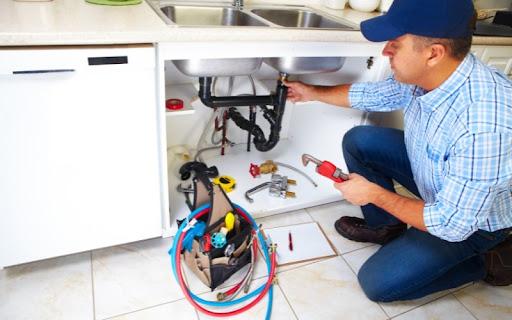Plumbing problems can be the biggest nightmare for homeowners. From leaky faucets to blocked drains, these issues can cause disruption to your routine, and could cause harm to your house if unsolved. Knowing the most common plumbing issues and how to fix these issues can help you save time and money as well as anxiety. In this article, we'll look at several of the more frequently encountered plumbing problems and offer helpful tips on how to resolve them.

1. Dripping Faucets
A faucet that drips is not just a nuisance, it could cause the waste of a large amount of water over the course of time. The most frequent cause for the faucet to drip is a damaged or worn-out washer. To resolve this problem take these steps:
• Shut off your water supply: Find the shut-off valve beneath the sink, and turn it off to stop water flow.
• Remove the faucet from the wall by using a screwdriver. lift the handle, and expose the faucet's cartridge or the valve stem.
• Replace the washer. Remove the washer that was used then replace it with brand new one that is the same type and size. Reassemble the faucet and switch off the water supply to test for leaks.
2. Clogged Drains
Clogged drains are a typical plumbing issue that can happen in showers, sinks or in toilets. The accumulation of soap residue, hair and food particles or other particles can impede water flow and lead to backups. Here's how to fix the problem of a blocked drain:
• Make use of a plunger. Place a plunger in the drain to create an impervious seal. Pull and push the plunger hard to break up the blockage. Repeat the process several times if needed.
• Try a drain-snapper or auger: Put an auger or drain snake into the drain, and then rotate it until it breaks up the clog or eliminate it. Follow the instructions of the manufacturer to ensure proper use.
• Mix baking soda, vinegar and. Pour one teaspoon of baking soda, followed by one cup of vinegar down the drain. Cover the drain with a towel and allow the mixture to rest for around 30 minutes. Rinse by using warm water to remove the blockage.
3. Running Toilet
A toilet that is running can cause a lot of waste water and can result in expensive water costs. The issue is usually caused by a malfunctioning flapper valve or an ineffective fill valve. Here's how you can troubleshoot the issue with a toilet that is running:
• Examine the flapper valve: Lift the lid of the toilet tank and check the valve. Check that it's sealed properly. If it's damaged or worn you can replace it with new one.
• Make sure the valve is filled If you find that the valve isn't the problem, then look at the valve for fill. Set your water levels to the suggested level or replace the valve if it's damaged.
4. Low Water Pressure
The lack of water pressure is quite frustrating particularly when it affects many fixtures within your home. Many factors can contribute to the low water pressure, for instance the clogging of an aerator or shut-off valve, or the buildup of minerals within the pipes. To fix the issue of low water pressure:
• Clean the aerator: Take the aerator from the faucet, and scrub it clean. If it's blocked you can put it into vinegar and let it dissolve any mineral deposits.
• Examine the valve that shuts off: Check that the shut-off valve on the fixture is open. Sometimes, it could have been accidentally closed partially.
• Remove any mineral buildup you suspect the presence of mineral buildup within the pipes, it is possible to engage a professional plumber to cleanse up or repair the pipes that are affected.
5. Water Heater Issues
Issues caused by water heaters can cause an insufficient supply of hot water or insufficient heating. If you're having issues in or issues with your water heater, take a look at the following steps to troubleshoot:
• Make sure you check the pilot light If you own gas water heater, ensure that you have the pilot light is on. Follow the instructions provided by the manufacturer to replace it if required.
• Set the thermostat to your desired temperature: Make sure the temperature setting of the water heater is set to the right. Check the user's manual to get information on adjusting the temperature.
• Clean the tank In time, the deposits of dirt can accumulate in the water heater tank, which can affect the performance of the tank. The tank should be swept clean to eliminate any traces of sediment, in accordance with the instructions of the manufacturer.
It's important to keep in mind that although these troubleshooting suggestions will help you solve the most common plumbing issues however more complicated issues might need the assistance of a skilled plumber. If you're not sure or feel uncomfortable in any plumbing repair then it's recommended to get help from a professional to prevent any further harm.
In the end, knowing the common plumbing issues and how to fix these issues can save you money, time and a lot of frustration. Following the steps laid out in the article you will be able to solve leaking faucets, clogged drainage, flushing toilets low water pressure and water heater problems without fear. But, be sure to consider your safety and seek the advice of a professional plumber if you require. If you take care of your maintenance and make prompt repairs, you will be able to ensure that your plumbing system is in top condition and ensure the efficient running of your house's water supply.
